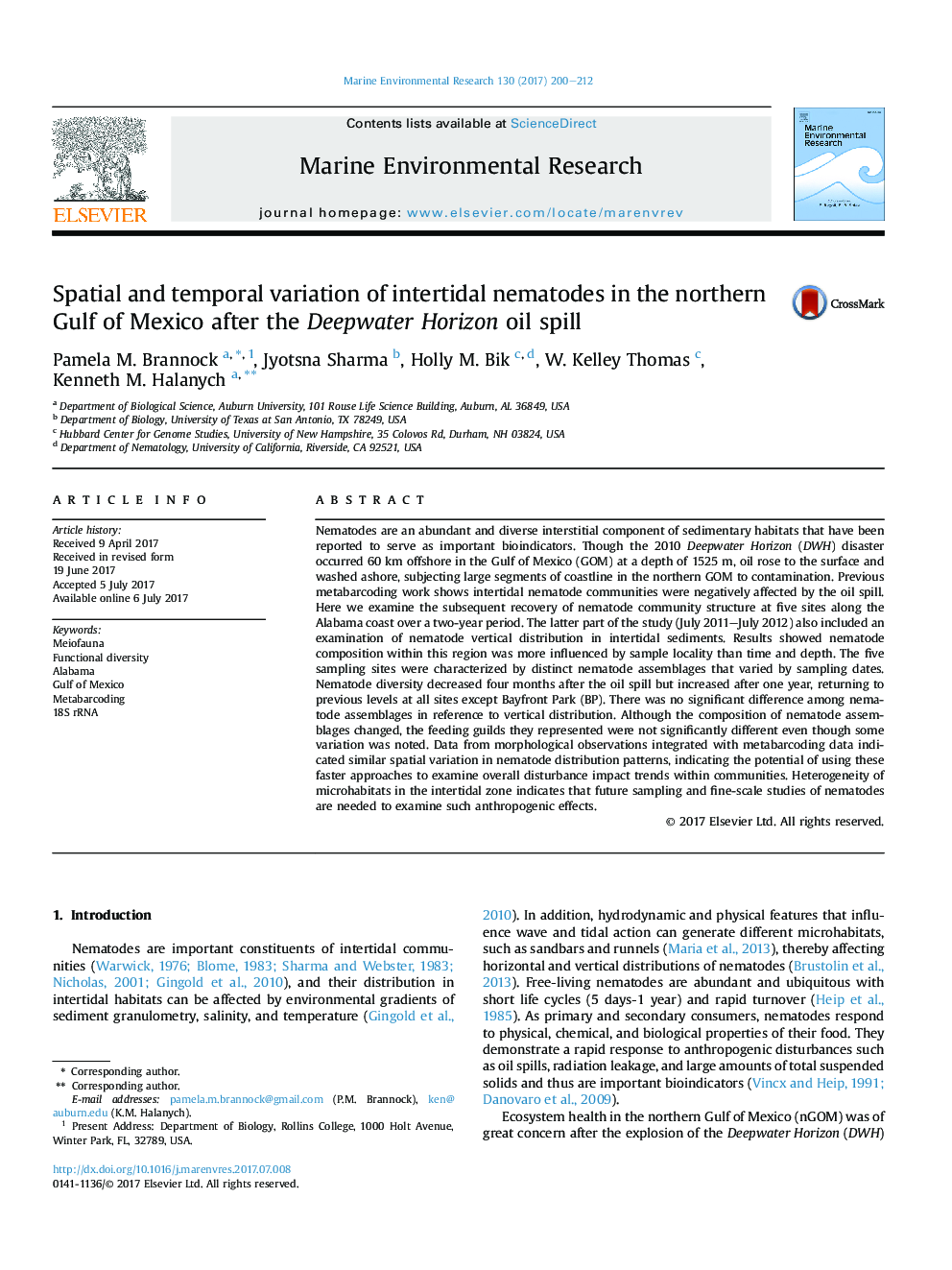| کد مقاله | کد نشریه | سال انتشار | مقاله انگلیسی | نسخه تمام متن |
|---|---|---|---|---|
| 5766159 | 1627553 | 2017 | 13 صفحه PDF | دانلود رایگان |

- Metabarcoding and morphological approaches show general agreement for nematode composition trends.
- Nematode genera diversity decreased post DWH oil spill but increased after one year.
- Nematode composition in nGOM more influenced by sample locality than time and depth.
- Majority of nematode genera not represented in molecular database.
Nematodes are an abundant and diverse interstitial component of sedimentary habitats that have been reported to serve as important bioindicators. Though the 2010 Deepwater Horizon (DWH) disaster occurred 60Â km offshore in the Gulf of Mexico (GOM) at a depth of 1525Â m, oil rose to the surface and washed ashore, subjecting large segments of coastline in the northern GOM to contamination. Previous metabarcoding work shows intertidal nematode communities were negatively affected by the oil spill. Here we examine the subsequent recovery of nematode community structure at five sites along the Alabama coast over a two-year period. The latter part of the study (July 2011-July 2012) also included an examination of nematode vertical distribution in intertidal sediments. Results showed nematode composition within this region was more influenced by sample locality than time and depth. The five sampling sites were characterized by distinct nematode assemblages that varied by sampling dates. Nematode diversity decreased four months after the oil spill but increased after one year, returning to previous levels at all sites except Bayfront Park (BP). There was no significant difference among nematode assemblages in reference to vertical distribution. Although the composition of nematode assemblages changed, the feeding guilds they represented were not significantly different even though some variation was noted. Data from morphological observations integrated with metabarcoding data indicated similar spatial variation in nematode distribution patterns, indicating the potential of using these faster approaches to examine overall disturbance impact trends within communities. Heterogeneity of microhabitats in the intertidal zone indicates that future sampling and fine-scale studies of nematodes are needed to examine such anthropogenic effects.
Journal: Marine Environmental Research - Volume 130, September 2017, Pages 200-212